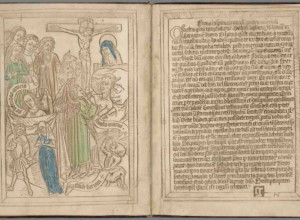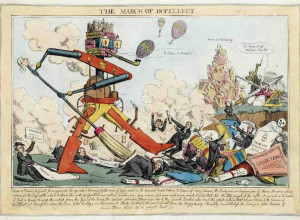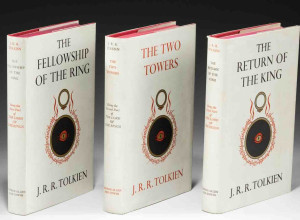Huntington Curators Uncover Two Sections of a 16th-Century Chinese Encyclopedia

SAN MARINO, Calif.— Curators at The Huntington Library, Art Collections, and Botanical Gardens announced today that they have uncovered in the library collection a volume comprising two sections of the largest book ever written in China, and one of the most important: the Yongle Encyclopedia (Yongle dadian ??????), dating from around 1562. The book had been shelved, uncatalogued, at The Huntington since 1968 after it was presented to the institution by the daughter of a missionary who had lived in China.
Staff at the time did not recognize the significance of the work, so they stored it away for later examination. It took the arrival of archivist Li Wei Yang to bring the true nature of the volume to light. He tentatively identified it as containing two of the sections of the renowned encyclopedia and proceeded to seek the expert advice of Liu Bo, a scholar on staff at the National Library of China.
Liu examined the manuscript at The Huntington and confirmed it: the book was indeed part of the Yongle Encyclopedia, sections 10,270 and 10,271.
The Yongle (pronounced "Yong luh") Emperor of the Ming dynasty (1368-1644) first commissioned the historic compilation in 1403. His directive was broad and unprecedented: to identify ancient and significant Chinese writings in a wide range of fields including astronomy, geography, medicine, religion, technology, and art. These accumulated texts were then transcribed by hand and consisted of 22,877 sections in 11,095 volumes.
The volume at The Huntington contains a section of the Book of Rites (Li ji ???), a book attributed to the disciples of Confucius but compiled sometime during China’s Han dynasty (206 BC-220 AD). It has long been considered one of the five Confucian Classics. Four of the 12 commentaries to the text cited in the encyclopedia are not found elsewhere, said Liu. These, he said, “are especially important to the study of the Book of Rites…they are very precious.”
Years after Yongle’s death, between 1562 and 1567 during the reign of the Jiajing Emperor, the entire manuscript was copied to ensure that, if the original were lost, there would still be another. In fact, the original was lost during the fall of the Ming dynasty in 1644. As for the duplicate set, it is not completely understood what became of every book; however, experts estimate that only about 400 volumes remain—most of them in China, but some in libraries and universities around the world. The Huntington volume is the only one known to exist in the Western United States.
Coming to The Huntington
Joseph Whiting was a Presbyterian missionary living in China in 1900 at the time of the Boxer Rebellion. The anti-foreigner uprising sent Whiting and others into hiding in Beijing. As portions of the city burned, he apparently salvaged the volume out of a pile of discarded material at the adjacent Hanlin Academy where the Yongle Encyclopedia was deposited. He brought the volume to the United States, where it appears to have been loaned to Oberlin College for some period. After his death, his daughter Mabel Whiting, then living in Southern California, gave it to The Huntington.
“The Huntington constantly uncovers or rediscovers historical materials, but this has to stand out as extraordinary,” said Yang. “A Chinese historical treasure at the library is a real surprise.”
“That's the excitement of working at The Huntington,” said Alan Jutzi, The Huntington’s Avery Chief Curator of Rare Books. “This is a research library with 9 million rare books, manuscripts, and other materials. We have catalogued much of our collection, but there are still some unknowns. That’s the beauty of a place like this; there is always something to be learned or discovered.”
The Huntington has digitized the volume and is making it available online. A special display of the book is slated to run from Dec. 13, 2014, to Mar. 16, 2015, in the East Foyer of the Library Main Hall. Li Wei Yang and Duncan Campbell, the June and Simon K. C. Li Curator of the Chinese Garden, will give a free public lecture on the Yongle Encyclopedia on Jan. 8, 2015, at 7:30 p.m. in The Huntington’s Ahmanson Room.
Image: Pages from section 10,270 of the Yongle Encyclopedia, 1562-1567. The Huntington Library, Art Collections, and Botanical Gardens.















